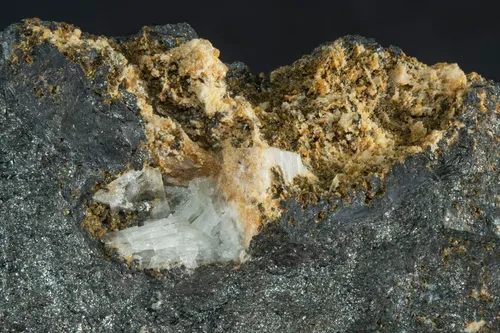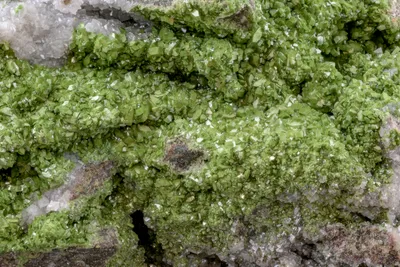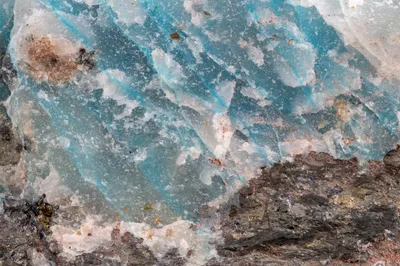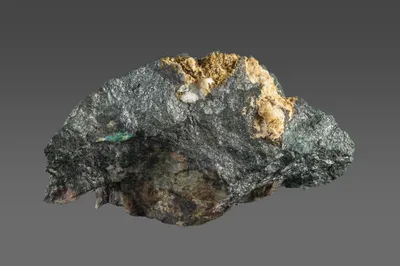
Image Credit: Malcolm Southwood
Mineral Species
Zincroselite
Type Locality
Yes
Composition
Ca2Zn(AsO4)2·2H2O
Crystal System
Monoclinic
Status at Tsumeb
Confirmed (type locality)
Abundance
Extremely rare
Distribution
Second oxidation zone
Paragenesis
Supergene
Entry Number
Species; TSNB384
Type Mineralogy
TCL mineralogist John Innes is credited with the discovery of zincroselite. Innes found the type specimen in the West 40 Stope on 32 Level (No. 1 sub-level) in the second oxidation zone. IMA 1985-055 was described by Keller et al. (1986) and named for its compositional relationship with roselite. Zincroselite is the zinc analogue of roselite and is dimorphous with gaitite (for which Tsumeb is also the type locality). The structure of zincroselite (and of its triclinic dimorph, gaitite) was refined by Keller et al. (2004). Type material is conserved at the Institut für Mineralogie und Kristallchemie, Universität Stuttgart, Germany (specimen TM-85.55) and at the Smithsonian Institution in Washington D.C. (catalogue number 163340).
General Notes
Zincroselite is the monoclinic dimorph of gaitite. On the type-specimen, crystals of zincroselite are lathlike, elongated, and striated parallel to [001], colourless to white, with a vitreous lustre, and associated with tsumcorite, stranskiite, leiteite, quartz, and tennantite (Keller et al. 1986; Keller and Innes 1986).
Gebhard (1999) described a specimen with crystals of zincroselite to 20 mm that had erroneously been labelled as cerussite.
A specimen in the Pinch Collection (MGMH 2020.7.778) comprises columnar crystals of white zincroselite (to 4 mm) associated with pale yellow austinite in a tennantite-rich sulphide matrix. This specimen is included in the RRUFF database, according to which it has co-type status (https://rruff.info/zincroselite/display=default/; accessed July 2023).
Associated Minerals
austinite; claudetite (?); dolomite; leiteite; quartz; stranskiite; tennantite-(Zn); tsumcorite




